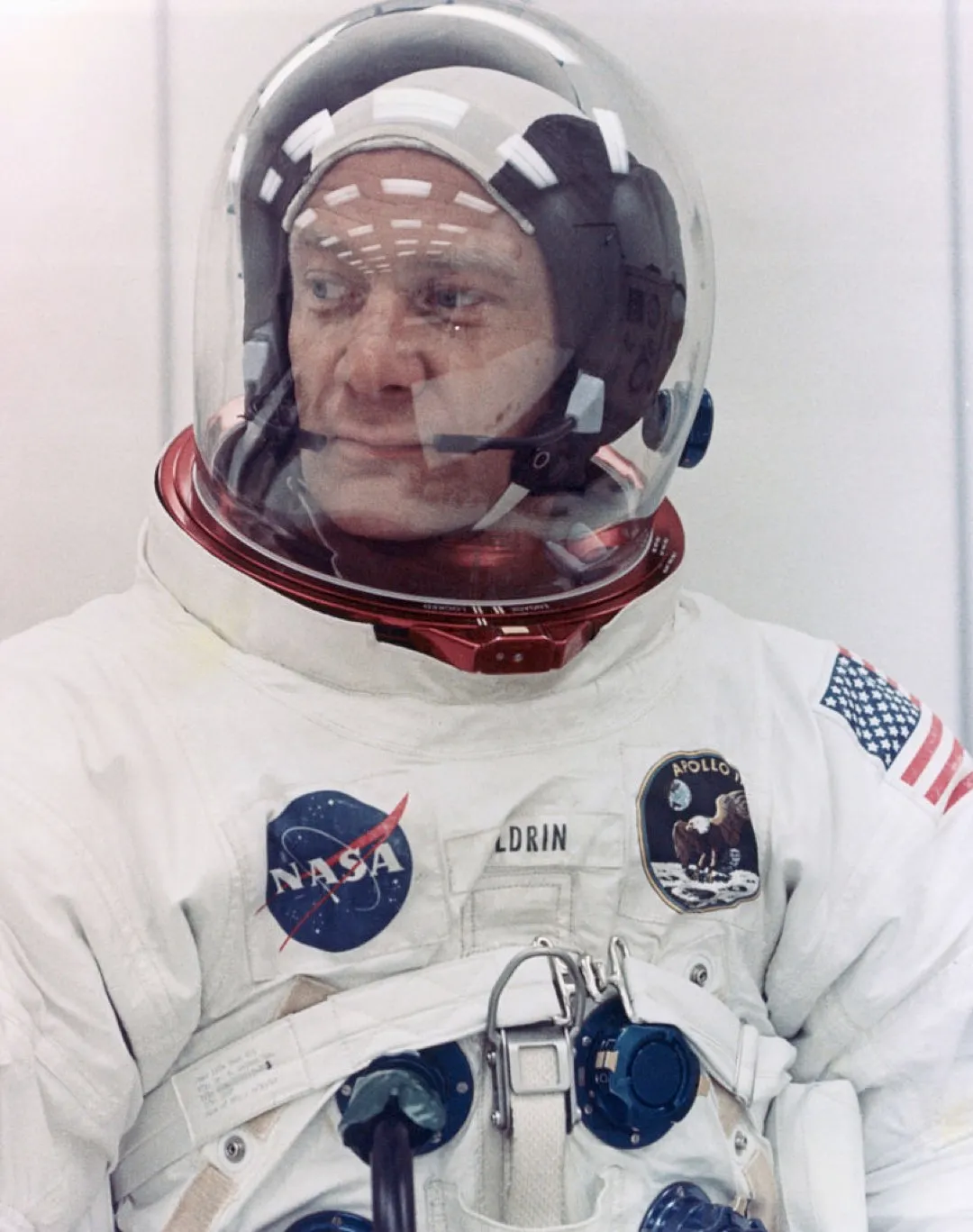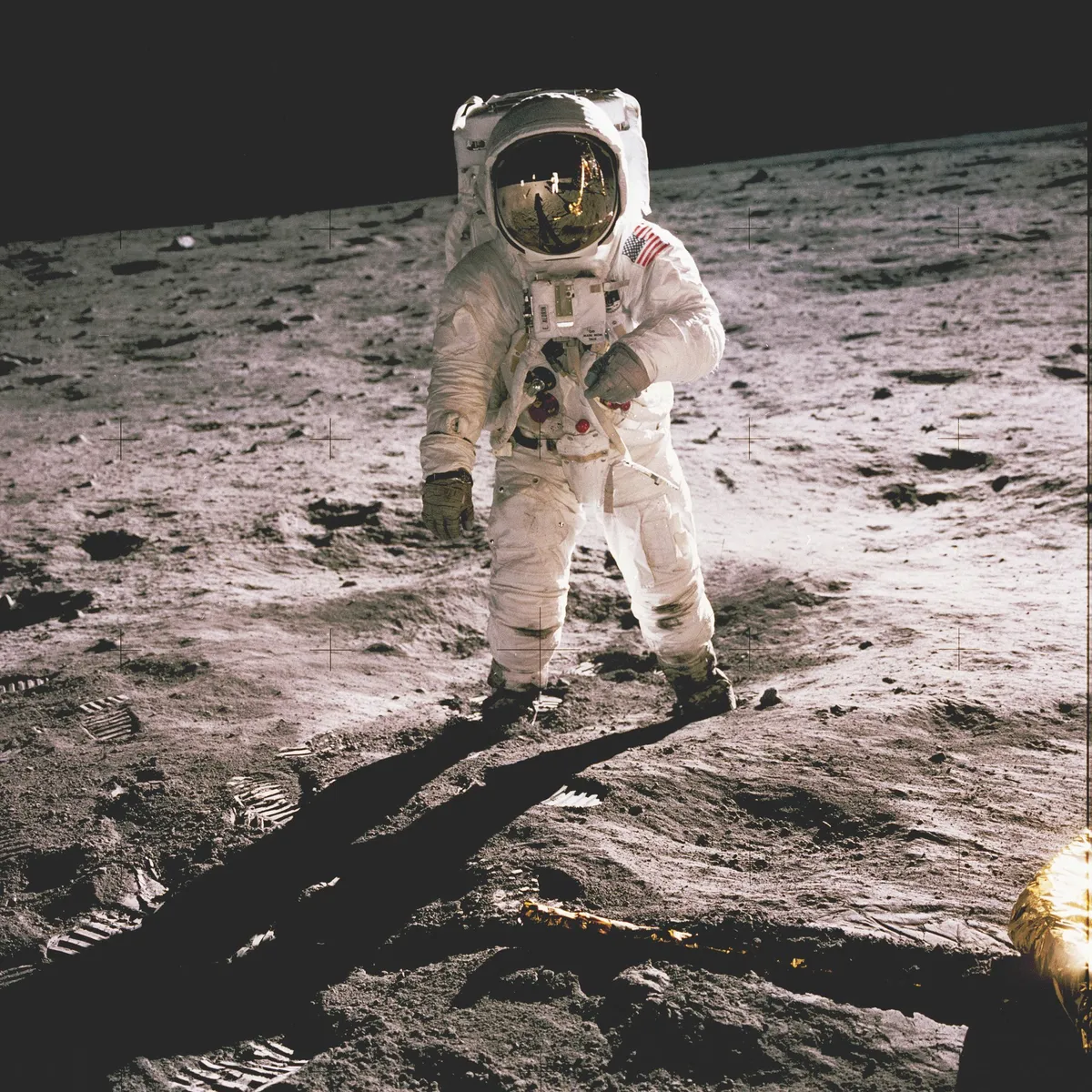The second man on the Moon was born in 1930 in Montclair, New Jersey. His father, Edwin Eugene Sr, had been a student of the rocket pioneer Robert Goddard and became a senior figure in military aviation. He expected his son to follow in his footsteps.
Aldrin complied, attending West Point Military Academy, graduating in the top three of his class, then joining the Air Force. He flew 66 combat missions in Korea and in 1963 completed a doctorate in astronautics at the Massachusetts Institute of Technology.

His doctoral thesis, Line-of-Sight Guidance Techniques for Manned Orbital Rendezvous, caused a sensation in the aerospace community: he had trained himself as an expert in orbital rendezvous, a crucial skill for the emerging space programme.
Joining NASA in 1963, he flew aboard Gemini 12 with Jim Lovell in command and made three spacewalks, using handrails on the flanks of the Agena 12 craft (an addition that came from an idea of Aldrin’s).
When Aldrin learned of his selection for Apollo 11, he assumed that Armstrong, as mission commander, would stay aboard the lunar module while he would be the first to exit and step out on to the Moon’s surface. This had been the custom for all the extravehicular activity during the Gemini missions. But the design of the lunar module’s interior and position of the spacecraft’s door meant Armstrong had to exit first.

Aldrin’s career in the wake of Apollo 11 was uneven. Returning to duty with the Air Force in 1971, he was given command of the Edwards Air Force Base, but became restless and unhappy. Another issue for Aldrin was his unrewarding relationship with his father – an ungenerous, hard-driving man who seldom gave his son any credit for his achievements.
He suffered from the anti-climax of returning to normality. In 1973 he said, “I had been to the Moon. What could I possibly do next? I suffered from what the poets have described as ‘the melancholy of all things done’.”
Biography
20 January 1930 - Edwin Eugene Aldrin Jr is born in Montclair, New Jersey to Edwin Eugene Aldrin Sr and Marion Moon.
1932 - Takes his first flight, aged two, in a Lockheed Vega piloted by his father.
May 1951 - Graduates third in his class from US Military Academy, West Point.
December 1951 - Joins the US Air Force and serves in the Korean War. Flies 66 combat missions in F-86 Sabres, shooting down two MiG-15s.
29 December 1954 - Marries Joan Archer. They have three children – James, Janice and Andrew.
1956 - Begins a three-year Air Force assignment in Bitburg, Germany, flying F-100 Super Sabres.
1959 - Enrols at Massachusetts Institute of Technology for a doctorate in astronautics, which he receives just over three years later.
October 1963 - Selected by NASA for its astronaut programme. He pioneers the practice of underwater training to simulate zero gravity.
11 November 1966 - Launches into space on the Gemini 12 mission, and sets a record for longest extra-vehicular activity.
4 January 1969 - Learns of his selection for the prime crew of Apollo 11.
March 1972 - Retires from the Air Force due to psychological and personal problems. First marriage ends in divorce.
19 December 1975 - Marries Beverly Van Zile.
10 April 1978 - Second marriage ends in divorce.
14 February 1988 - Marries Lois Driggs Cannon.
August 1996 - Descends 3,500m below the surface of the North Atlantic in a submarine to the wreck of the Titanic.
1999 - Founds the ShareSpace Foundation to promote space tourism.
Read more about the heroes of the Apollo programme:
- Neil Armstrong: Apollo 11 mission commander
- Michael Collins: Apollo 11 command module pilot
- Wernher Von Braun: Director of the Marshall Space flight Center/Saturn V chief architect
- Ladies who launch: the women behind the Apollo Program
- Apollo 11 Mission Control: the people behind the Moon landing [via BBC Sky at Night Magazine]
Follow Science Focus onTwitter,Facebook, Instagramand Flipboard
